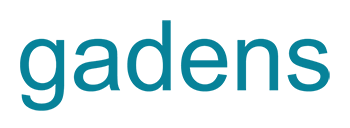A recipe for controversy: RecipeTin Eats and Bake with Brooki
Key takeaways
- Although you cannot copyright a caramel slice itself, copyright can subsist in the written recipe as a literary work. However, enforcement is likely to be difficult.
- Chefs and bakers often draw inspiration from each other’s recipes. However, it is generally expected to seek consent and provide credit or attribution, both respecting moral rights and as a professional courtesy.
- The culinary industry is competitive, so while pursuing a copyright infringement claim might be complex and unclear, raising awareness about such issues can offer some resolution in the court of public opinion, provided it does not lead to a claim of defamation.
Background
Nagi Maehashi, owner of popular cooking website RecipeTin Eats and author of various cookbooks, has made allegations that Brooke Bellamy, TikTok influencer and bakery owner, copied two of Maehashi’s recipes in Bellamy’s recently published cookbook Bake with Brooki.
A rough chronology of the events is set out below:
- Bake with Brooki is published by Penguin Random House (Penguin) and released 29 October 2024.
- A reader of Maehashi’s website notifies her in November 2024 of perceived similarities between her recipes and two of those found in Bellamy’s cookbook.
- Maehashi initially contacts Penguin on 4 December 2024.
- Penguin replies, denying the allegations via its lawyers in or around December 2024.
- Maehashi makes a personal statement on 29 April 2025 regarding her concerns and alleging plagiarism by Bellamy and a failure by Penguin to undertake reasonable due diligence over the content provided by Bellamy for publication.
- Brooke responds on 30 April 2025 with a personal statement via social media denying the allegations.
Interestingly, since Maehashi made these allegations, Sally McKenney, owner of popular baking website Sally’s Baking Addiction, has also made allegations that Bellamy also copied McKenney’s ‘Best Vanilla Cake’ recipe in Bellamy’s cookbook.
Recipes as a ‘literary work’
Copyright does not subsist in the idea of a dish itself. No one has copyright in a caramel slice, for example. However, in Australian copyright law and under the Copyright Act 1968 (Cth), copyright can subsist in the form of the recipe and how the author has expressed that recipe, as a literary work. For example, the form of the recipe could include the distinct order of ingredients and quantities, the expression of the preparation methods, and how the recipe is formatted and presented overall.
This means that if a cookbook author created an original expression of a dish via a recipe, then copyright can subsist in that expression and the recipe itself can therefore subject to copyright protection.
However, enforcing and protecting copyright in a recipe will be difficult, as copyright does not prevent another person from either creating a similar literary work that does not copy a substantial part of the first recipe or creating an identical work if the other person can prove that they independently created the identical work without any access or consideration of the first recipe.
Moral rights and ethical considerations
Ancillary to copyright in a literary work, an author of copyright also automatically holds moral rights. These include the rights of attribution of authorship, to not to have authorship falsely attributed, and integrity of authorship.
If copyright infringement is made out, these moral rights are also likely to come into play.
Further, in the culinary industry, chefs may exchange recipes and build recipe creation and testing on established cooking knowledge, techniques, ingredients, and methodologies. There appears to be a strong emphasis on the sharing of professional expertise, provided that consent from the original author and proper attribution of original sources that influence a chef’s endeavours is provided.
What crumbs are left…?
As the matter between Maehashi against Bellamy and Penguin is in its infancy, it is unclear how the allegations and dispute will resolve or eventuate at all.
However, this is a timely reminder for authors to consider the following in creating and developing works that take the form of a set of instructions:
- Authors should document the steps that they take in creating, developing and testing their recipe (or instructions) with clear timestamps. For example, a generic photo of a caramel slice is not evidence that one has created, developed or tested the recipe for that caramel slice.
- Authors may consider taking a cue from Adam Liaw – avoid looking at other authors’ published works on the subject because this could give rise to an inadvertent copying.
If taking inspiration from another author, seek prior written consent and provide proper attribution.
If you found this insight article useful and you would like to subscribe to Gadens’ updates, click here.
Authored by:
Antoine Pace, Partner
Raisa Blanco, Special Counsel
Robert McIntyre, Graduate


